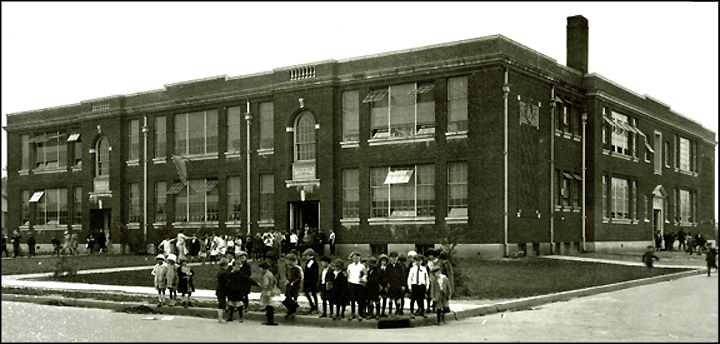Today’s column deals with the old North Side School that was built in 1922 at N. Roan Street, sandwiched between E. Eighth and E. Chilhowie avenues. In 1928, the city began a study for replacing, remodeling or expanding several area schools.

That same year, the Johnson City Chronicle initiated a review of existing schools in articles titled, “Inside the City School Houses.” This was likely done in an effort to draw attention to several schools that needed attention. A number of educational facilities were inspected over the course of several weeks and the results reported in the paper. The reviews ranged from deplorable to excellent; those receiving an unsatisfactory grade was due primarily to the building being crowded or aged.
A year later, the city made a decision to spend $300,000 to build new elementary schools for Columbus Powell, Martha Wilder (later renamed Stratton) and West Side (later became Henry Johnson). The appropriation also included additions to two schools, Science Hill and South Side. (My November 1, 2008 feature story dealt with that expansion program).
North Side School, which was only six years old at the time, received a glowing report. One comment stated, “Wherefore, let us give thanks that in our corporate midst on city-owned acreage there stands a public school building that appears to be well-suited to most of the crying needs of the day. It is modern in type and construction and ample of accommodation.”
The report went on to say that more tears had been shed over North Side than any other grammar school building, but they were from childhood heartbreak at being taken out of distant schools and being compelled to walk several miles every day to attend classes.
Many residents vividly recall that the school was a two-story brick building containing 20 classrooms. The six-year-old facility was described in the report as “cheery, well lighted and properly ventilated, with wide airy corridors whose ground floor doorway entrances had no ice coated steps to navigate to enter the building.”
That year, there were 800 students attending six grades of classes there. The floors were made of hardwood with tile floors in the boys’ and girls’ lavatories on both levels. The stairways, designed for emergency exit, were well placed throughout the building. Each classroom contained a wardrobe with doors that opened only into it. Tack strips adorned each classroom slate blackboard. Separate rest rooms were provided for teachers. Panic locks on all interior doors enabled classroom occupants to open the doors from the inside by turning the doorknob. On the outside, the knob could be locked if desired, but it could never be locked on the inside. Panic locks were also placed at each ground floor main entrance.
The article noted that the past decade had marked rapid changes in the building complexion of the city as a whole. Old structures were repaired, remodeled, enlarged or replaced to make room for new. The life of a building suited to swift progress was said to be relatively short. The Chronicle chided the school system for willful neglect of school buildings, allowing them to fall in such disrepair that the final solution was demolition.
Although some schools had occasional repairs made to them and even had additions built onto them, most had been woefully neglected. This was deemed shameful to the students who tried to get a good education there.
The newspaper ended by saying, “And if so, in light of what has already been written and anticipating the worst yet to come, let us be thankful that in at least one of our valuable public school properties everything is jake.”
I will feature the reports of some of the other schools in future columns. Three had very unflattering comments made against them and were targeted for replacement.

Comments are closed.